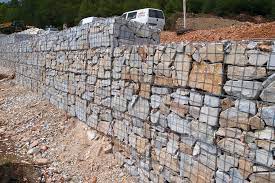Within the arena of panorama structure, Gabions (gabiony) surfaces have emerged as a lasting and attractive answer for a number of design obstacles. These functional buildings, constructed from wire cages filled with stones or recycled components, supply an array of design and style alternatives although promoting enviromentally friendly efficiency and resilience.
One of several primary destinations of gabion (gabiony) surfaces in panorama structures is the appearance. The juxtaposition of normal materials against modern day metropolitan adjustments creates a impressive distinction that enhances the general artistic value of exterior spaces. Whether used as keeping surfaces, back garden edges, or ornamental elements, gabion constructions add more texture, level, and persona to landscapes, lifting the sensory practical experience for inhabitants and website visitors likewise.
Beyond their elaborate function, gabion surfaces engage in an important role in environmental recovery and biodiversity conservation. By creating environment niches for grow kinds and organisms, they contribute to the formation of tough ecosystems in urban and peri-downtown regions. Furthermore, the permeable nature of gabion components facilitates stormwater control and groundwater charge, mitigating the impacts of urbanization on hydrological periods.
In scenery design and style tasks, gabion walls offer unmatched versatility and adaptability to diversified environment contexts. No matter if shaped into curved forms to imitate natural curves or piled to make terraced gardens, these components may be tailored to fit the unique topography and appearance of each and every internet site. Moreover, the modular mother nature of gabion design allows for easy modification and scalability, empowering creative designers to comprehend their artistic vision while adhering to budgetary limitations.
From a sustainability perspective, gabion wall space provide several positive aspects over standard developing components. By using locally-sourced rocks, gravel, or recycled cement, they decrease embodied vitality and reduce carbon footprint connected with transport and developing. Moreover, gabion buildings market biodiversity and ecological connections, adding to the entire durability of city ecosystems within the encounter of global warming and urbanization pressures.
In summary, gabion surfaces stand for a beneficial fusion of looks, features, and sustainability in panorama design. By utilizing the natural power of all-natural resources and adopting revolutionary design strategies, these buildings give you a holistic approach to outdoor space layout that prioritizes environment stewardship and individual well-becoming. As we make an effort to make strong and livable cities for future generations, gabion walls stay as being a proof of the transformative potential of eco friendly style methods.



